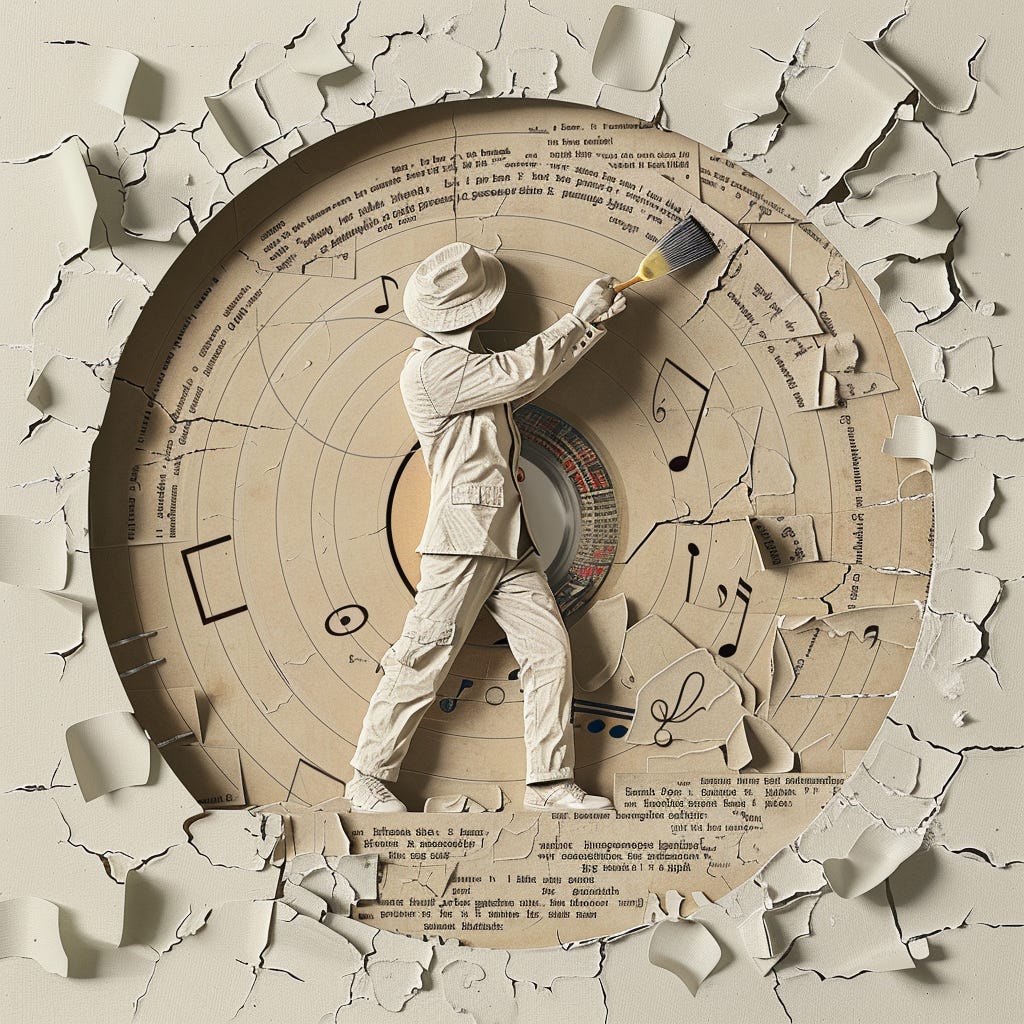Level Up Your AI Game: Summer of Prompting
Week 4 of 4 - Deconstructing Creativity with Reverse Prompting
It's the final week of my Summer of Prompting series! For this last post, I wanted to share a technique that I find incredibly helpful, especially when it comes to audio – though it can be applied to any modality, whether it's text, images, or even code. Get ready to flip the script with Reverse Prompting.
What is Reverse Prompting?
Reverse Prompting is like peeking behind the curtain of AI creativity. Instead of providing a prompt to generate content, you're taking existing content and working backward to uncover the prompt that could have created it. This deconstruction process provides valuable insights and building blocks for crafting your own powerful prompts.
From Hit Song to AI Insights
Let's say you're blown away by the song "We Are Young" by fun. and you dream of capturing that same anthemic energy in your own music. With Reverse Prompting, you can use a powerful AI like Gemini to analyze the song's essence.
Here's how I approached it:
I fed the song into Gemini and used the following prompt in AI Studio:
"You are an expert music analyst with deep knowledge of lyrics, musical composition, and cultural context. I will provide you with a song. Your task is to reverse engineer a prompt that would generate a similar song. [Insert the song]"
The output was insightful, highlighting key elements of the song:
"Compose an upbeat indie-pop song with a driving rhythm and a hopeful, slightly nostalgic feel. The lyrics should tell the story of someone in a crowded bar, trying to reconnect with an ex while their friends party around them. Include imagery of the bar scene, youthful energy, and a hint of regret and longing. The song should have a strong, singalong chorus that emphasizes the theme of carrying someone home and the fleeting nature of youth."
Armed with this analysis, you can now cherry-pick the elements that resonate with your vision and use them as a foundation for crafting your own unique song prompt.
Putting Reverse Prompting to the Test
Just for fun, I decided to take the essence of the AI-generated prompt and feed it into Suno, another AI music generator. However, instead of replicating the original song's theme, I wanted to create something completely different – a song about a heartwarming family trip to Canada.
Since Suno has a 200-character prompt limit, I had to condense things:
"Compose an upbeat indie-pop song with a driving rhythm and a hopeful, slightly nostalgic feel. The lyrics should tell the story of a family trip to Canada filled with quality family and friend time.”
Beyond Music: Reverse Prompting Across Domains
While my examples focused on music, Reverse Prompting is a versatile technique with applications across various domains. Here are a few more ways you can use it:
E-Commerce Product Descriptions: Analyze top-performing product listings to identify key elements, tone, and persuasive language patterns. Use these insights to craft prompts for generating compelling product descriptions.
Marketing & Ad Copy: Deconstruct successful ad campaigns to uncover their core message, target audience, and call to action. Reverse engineer these elements into prompts for generating high-converting ad copy.
Professional Writing (Proposals, Reports, etc.): Analyze well-structured and persuasive documents in your field. Identify key headings, formatting, and language choices to create prompts that guide AI in generating similar content.
The Power of Deconstruction
Reverse Prompting empowers you to learn from the best. By analyzing existing high-quality content, you gain a deeper understanding of what makes it effective and can apply those learnings to your own creative endeavors with AI. So go forth, reverse engineer, and unlock new levels of AI-powered creation!



